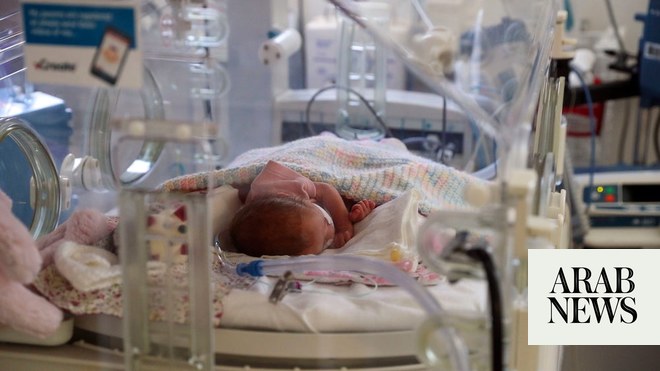
Tiny plastic particles in the lungs of pregnant rats pass rapidly into the hearts, brains and other organs of their foetuses, research shows. It is the first study in a live mammal to show that the placenta does not block such particles.
The experiments also showed that the rat foetuses exposed to the particles put on significantly less weight towards the end of gestation. The research follows the revelation in December of small plastic particles in human placentas, which scientists described as “a matter of great concern”. Earlier laboratory research on human placentas donated by mothers after birth has also shown polystyrene beads can cross the placental barrier.
Microplastic pollution has reached every part of the planet, from the summit of Mount Everest to the deepest oceans, and people are already known to consume the tiny particles via food and water, and to breathe them in.
The health impact of tiny plastic particles in the body is as yet unknown. But scientists say there is an urgent need to assess the issue, particularly for developing foetuses and babies, as plastics can carry chemicals that could cause long-term damage.
Prof Phoebe Stapleton, at Rutgers University, who led the rat research, said: “We found the plastic nanoparticles everywhere we looked – in the maternal tissues, in the placenta and in the foetal tissues. We found them in the foetal heart, brain, lungs, liver and kidney.”
Dunzhu Li, at Trinity College Dublin (TCD) in Ireland and not part of the study team, said: “This study is very important because it proves the potential to transfer [plastic particles] in mammal pregnancy – maybe it is happening from the very beginning of human life as well. The particles were found almost everywhere in the foetus and can also pass through the blood-brain barrier – it is very shocking.”
Prof John Boland, also at TCD, said: “It is however important not to over-interpret these results. The nanoparticles used are near spherical in shape, whereas real microplastics are irregular flake-like objects. Shape matters, as it dictates how particles interact with their environment.” In October, Li, Boland and colleagues showed that babies fed formula milk in plastic bottles are swallowing millions of particles a day.
The rat study was published in the journal Particle and Fibre Toxicology and involved placing nanoparticles in the trachea of the animals. Stapleton said the number of particles used was estimated to be the equivalent of 60% of the number a human mother would be exposed to in a day, although Li’s opinion was that this estimate was too high.
The 20 nanometre beads used were made of polystyrene, which is one of the top five plastics found in the environment, said Stapleton. They were marked with a fluorescent chemical to enable them to be identified. A separate experiment showed that the nanoparticles crossed the placenta about 90 minutes after the mothers were exposed.
Twenty four hours after exposure, the weight of the foetuses was an average of 7% lower than in control animals, and placental weights were 8% lower. Weight loss was also seen in other experiments using titanium dioxide particles. The rats were exposed to the plastic nanoparticles on day 19 of gestation, two days ahead of the usual time for birth and when the foetus is gaining the most weight.
“Our working theory is that something in the maternal vasculature changes, so you get a reduction in blood flow, which in turn leads to a reduction in nutrient and oxygen delivery,” said Stapleton.
She said more research was needed: “This study answers some questions and opens up other questions. We now know the particles are able to cross into the foetal compartment, but we don’t know if they’re lodged there or if the body just walls them off, so there’s no additional toxicity.”
Stapleton said the nanoparticles used in her research were a million times smaller than the microplastics found in human placentas, and therefore currently much more challenging to identify in human studies. “But we know nanoparticles have greater toxicity than the microparticles of the same chemical, as smaller particles get deeper into the lungs.”
The next step for the researchers is to place the rats in an “inhalation chamber”, where the particles can be breathed in, rather than being placed in the trachea. This also allows the assessment of chronic exposure, in which lower doses are given over longer periods, rather than one large dose.
Previous research in rats has shown that silver and carbon nanoparticles pass from mother to foetus and harm health. In humans, gold nanoparticles breathed in were then found in the blood and urine of volunteers and were still present after three months.












